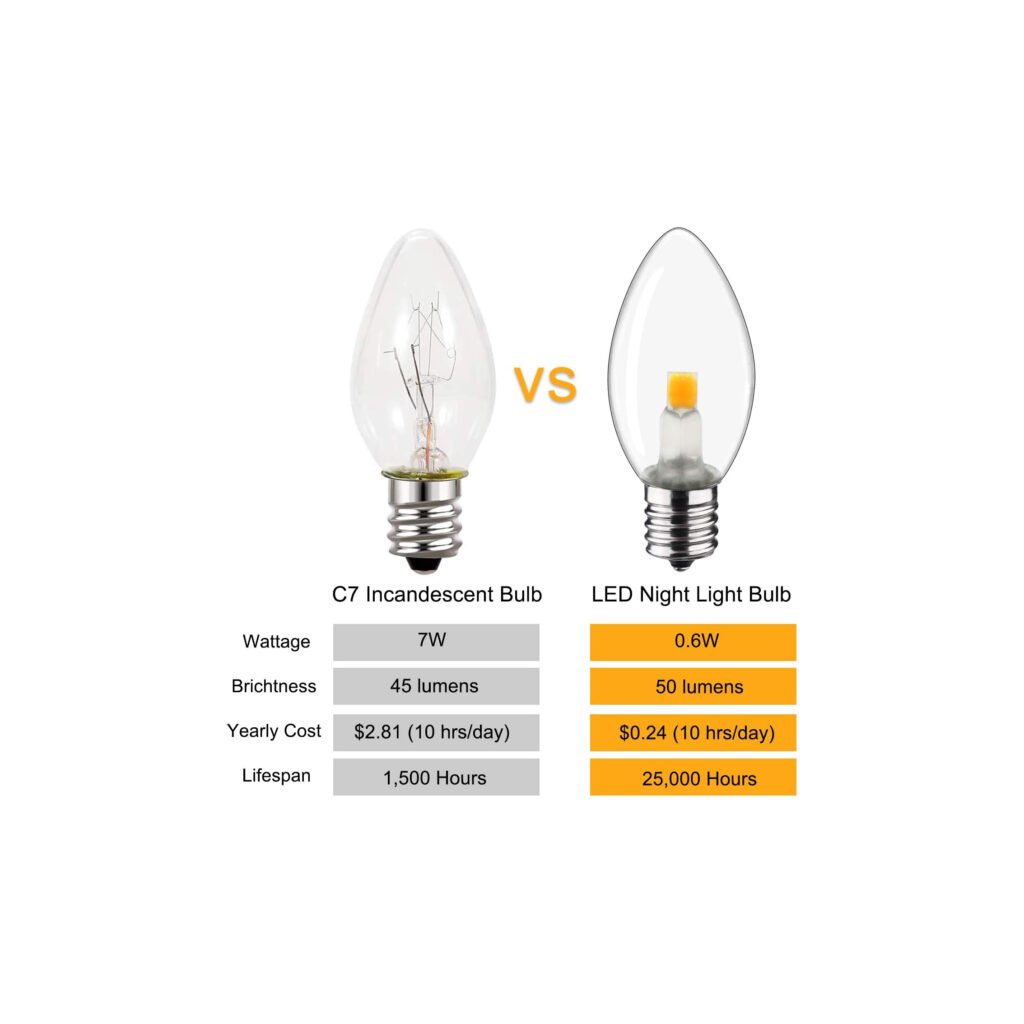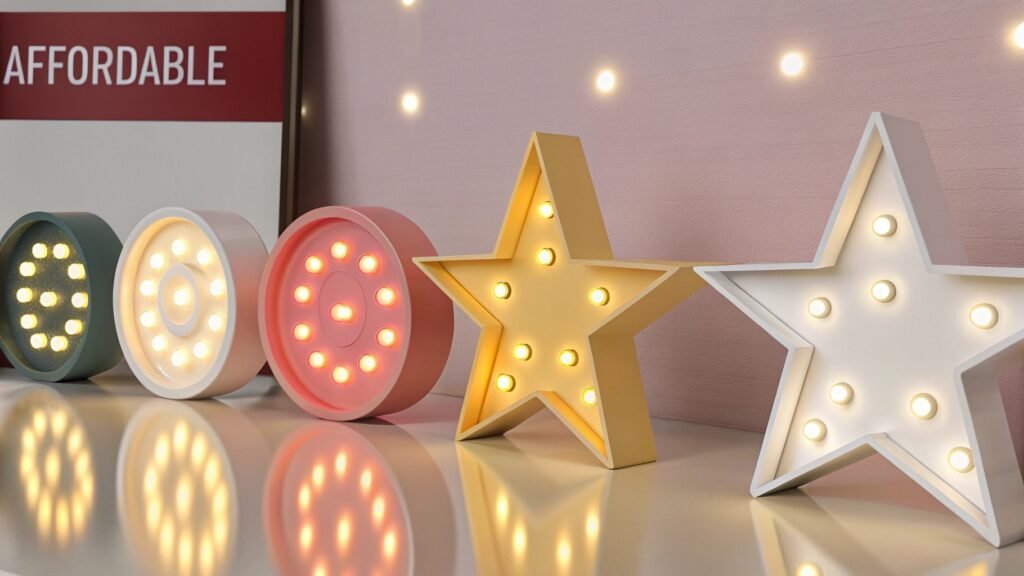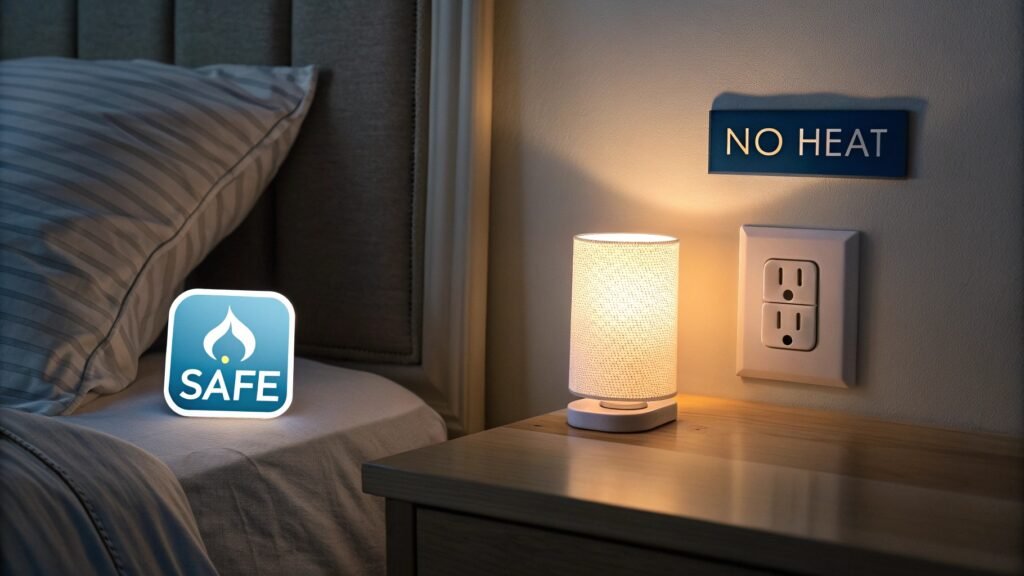Night lights are a common household item, but many people wonder about their energy consumption. Are they costing you more than you think?
A typical plug-in night light1 consumes very little electricity, ranging from 0.5 to 7 watts depending on its type. LED night lights often use less than 1 watt, while incandescent ones might reach up to 7 watts. This low power usage makes them highly cost-effective, even when left on overnight.

Night Light Energy Usage
Night lights are designed to provide a soft glow during the night, helping navigate dark spaces without disturbing sleep. Understanding their energy consumption can help you make informed choices about using them in your home.
Does a nightlight use a lot of electricity?
Night lights are known for their low energy consumption. Most models, especially LED types, use between 0.5 and 2 watts. Even traditional incandescent night lights typically consume only 4 to 7 watts.
This means that leaving a night light on for several hours each night will not significantly impact your electricity bill.
 Electricity Consumption of Night Lights
Electricity Consumption of Night Lights
Energy Consumption Breakdown
| Type of Night Light | Wattage Range | Monthly Consumption (kWh) |
|---|---|---|
| LED Night Lights | 0.5 - 2 watts | ~0.15 - 0.6 kWh |
| Incandescent Night Lights | 4 - 7 watts | ~1.2 - 2.1 kWh |
| Electroluminescent | ~0.5 watts | ~0.15 kWh |
As you can see, even if you have multiple night lights in your home, their collective energy usage remains low compared to other appliances.
How much does it cost to have a night light plugged in?
Calculating the cost of running a night light is straightforward. The formula is:
Cost = Energy Used (kWh) x Energy Price ($/kWh)
For example, if you have a 1-watt LED light running for 12 hours each day:
- Daily usage: (1 \text{ watt} \times 12 \text{ hours} = 12 \text{ watt-hours} = 0.012 \text{ kWh})
- Monthly usage: (0.012 \text{ kWh/day} \times 30 \text{ days} = 0.36 \text{ kWh})
Assuming an electricity rate of $0.12 per kWh, the monthly cost would be:
[
\text{Cost} = 0.36 \text{ kWh} \times \$0.12/\text{kWh} = \$0.0432
]
This means running a single LED night light costs less than five cents per month!
 Cost of Running Night Lights
Cost of Running Night Lights
Cost Comparison
| Type of Night Light | Monthly Cost (Approx.) |
|---|---|
| LED Night Light | $0.05 |
| Incandescent Night Light | $0.25 |
This illustrates just how economical it is to use LED night lights2 compared to older incandescent models.
Are plug-in night lights expensive to run?
In short, no! Plug-in night lights are one of the most cost-effective lighting options available today.
LED models are particularly economical, costing as little as $0.05 per month, while incandescent versions may run up to $0.25 monthly at most.
 Affordable Night Lighting
Affordable Night Lighting
Factors Affecting Costs
- Wattage: Lower wattage means lower cost.
- Usage Hours: Longer usage increases costs slightly.
- Type of Bulb: LEDs are far more efficient than incandescent bulbs.
By choosing energy-efficient options and being mindful of usage, you can keep costs minimal.
Is it safe to leave a plug-in night light on all night?
Yes, it is generally safe to leave LED night lights on all night.
LEDs produce very little heat compared to incandescent bulbs, reducing fire risks significantly. They are designed for long-term use and can remain plugged in without overheating or causing safety hazards.
 Safety of Night Lights
Safety of Night Lights
Safety Considerations
- Heat Production: LEDs stay cool; incandescent bulbs can get hot.
- Quality Matters: Invest in high-quality products to ensure safety.
- Placement: Ensure they are placed away from flammable materials.
Using LED night lights allows you to enjoy peace of mind while providing necessary illumination during the night.
Conclusion
Plug-in night lights are an affordable and safe lighting solution for your home.


